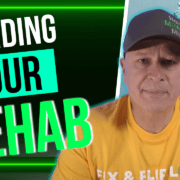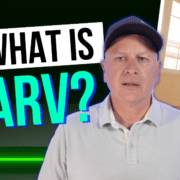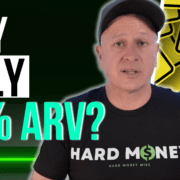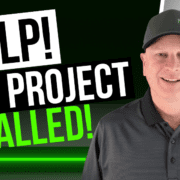Hard Money Loans for New Investors
Hard money loans open doors for newer, smaller investors who are looking for a way to enter the real estate game.
Our goal is to make it as easy as possible for new investors to find the right information so they can be successful.
What are hard money loans?
Hard money loans are short-term asset-based loans secured by real estate. These loans are typically provided by private investors, small companies or individuals in your local area.
The main advantage of hard money is they provide quick real estate financing based mostly on the asset and not on your credit score.
Hard money loans can be used for many things:
- Funding a fix-and-flip
- Financing the front-end of a BRRRR project
- Overcoming credit limitations often experienced by new investors
- Purchasing land for development
- Funding some construction projects
Pros of Hard Money Loans:
1. Speed
Whereas Wall Street companies or banks may take two to four weeks, getting approved for a hard money loan typically takes five to seven days.
Speed is critical in investing, and quickly getting your money upfront is crucial in the real estate game.
2. Upfront Financing
Hard money loans also give you money upfront. This allows you to get your escrows out to start the project. Most large companies want you to put money in first. This can be a particular problem for new investors, and hard money lets them get their foot in the door.
3. Flexibility
Large companies often have very strict lending criteria. If your project is unique, if it’s outside of the box, hard money lenders are more likely to consider it.
4. Higher Financed Amounts
If you find a deal that has a good loan-to-value ratio, hard money lenders may lend up to 100% of the financing. This lets you keep more of your own money in your pocket and use the lender’s funds for your project.
5. Property-Focused Approvals
Finally, approvals for hard money loans are mainly based on the property itself, the exit strategy and the planned renovations or improvements. Hard money is often a good fit if you’re an investor with limited credit history or a unique property or area.
Cons of Hard Money Loans
1. Higher Costs
While interest rates on hard money are typically similar to other lenders, costs can be anywhere from 1% to 1.5% higher. However, faster closing times often offset the higher cost and can get you better deals than Wall Street companies.
2. Shorter Terms
Typically, hard money lenders offer financing ranging from six to twelve months. Therefore, if you’re looking for something longer than twelve months, Wall Street companies or a local bank may be a better fit.
3. Limited Availability of Hard Money
Additionally, it’s important to remember that most hard money lenders are individuals, small companies, or private institutions. These lenders only have a finite amount of money to lend. It’s often necessary to build good relationships with local hard money lenders to ensure access to funds.
Hard Money Resources for New Investors
It can be tricky to determine what option is best for you. Because of this, we’ve compiled some resources to help you shop around for the right fit for your project.
Sites like Connected Investors help you network with other people in the business. Get plugged in with your local realtors, wholesalers, and lenders. Talk to other people in the industry to make sure you’re getting the best deals.
To help you shop around, we also have a great tool called the Loan Cost Optimizer that helps you find the good lenders. It’s free to download and to use!
If you’re still not sure if hard money loans are right for you, no problem! Check out the Cash Flow Company website or YouTube channel to learn about other, more Wall Street-style options that have the same personal connections as hard money loans.
Additional Questions and Research
Hard money is a very important tool, especially for new, small investors. However, you should always shop around, look around and talk to other experts so you know your options. Also, experts can help you better understand the terms and conditions of hard money loans so you know exactly what you’re getting into.
If you have questions about hard money loans, contact us and we’ll be happy to help you out!
Additionally, you can check out this video on our YouTube channel.










